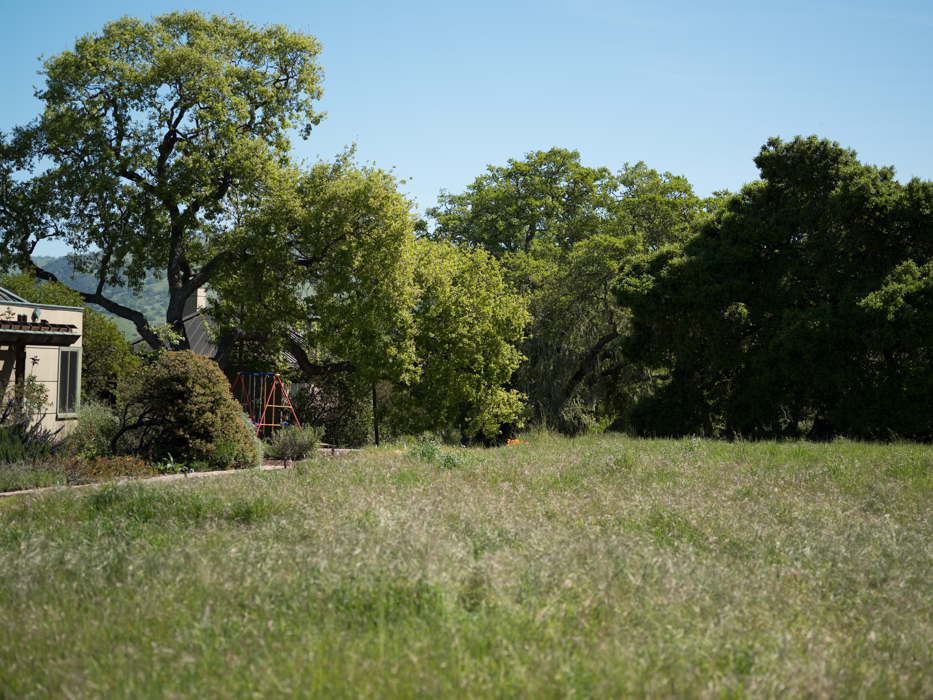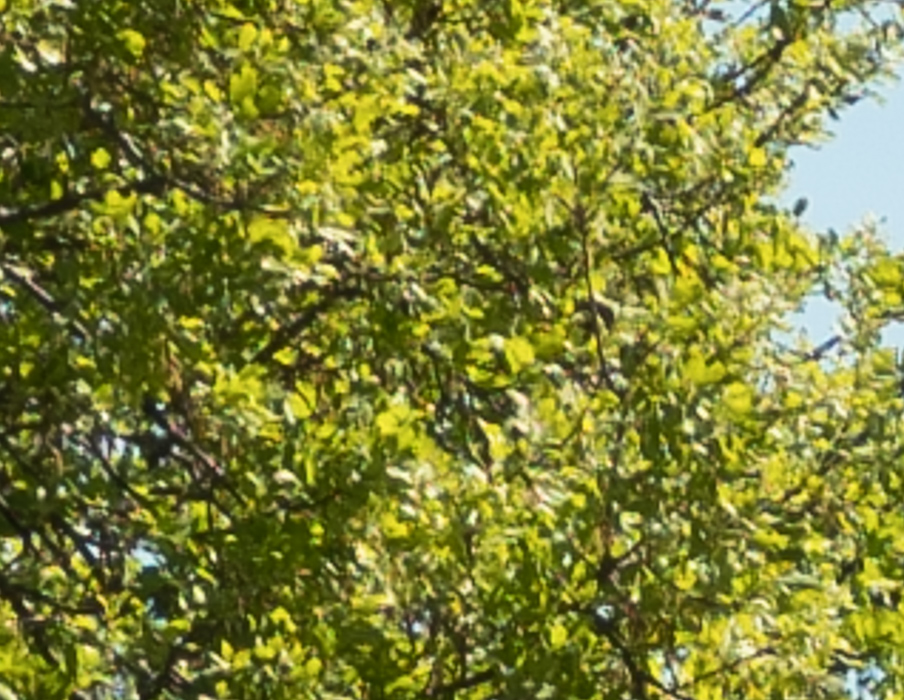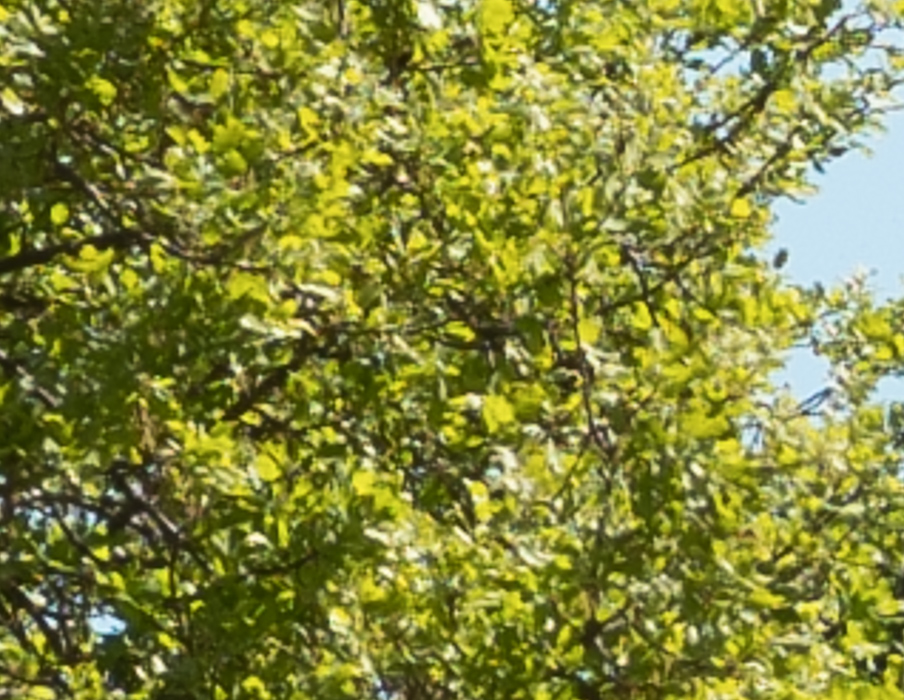This is the 22nd in a series of posts on the Fujifilm GFX-50S. The series starts here.
The Otus 85 works great at 1:1 cropping, and well at 4:5 cropping on the GFX. How well does the Hasselblad 80 mm f/2.8 HC lens do at the full 4:3 frame? And, while we’re at it, how does the Hasselblad 50-100 mm f/3.5-4.5 zoom do when set to 80 mm?
Stay tuned.
Shutter set to EFCS. Apertures from f/2.8 to f/11 in whole stops for teh 80, and f/3,5 to f/11 for the zoom. I focused three times at each aperture, and picked the sharpest images. 2-second self-timer. Arca-Swiss C1 cube on RRS sticks. Focus was upper-center-left of the image, on the trees above the roof. All images were refocused at each aperture. Daylight white balance selected in Lightroom.
The scene wide open with both lenses:


Both spread the light evenly. They should; they were both made for much larger sensor size.
At the focus point, magnified to 253%:

Here’s how to use these highly-magnified crops. The dimensions of the GFX sensor are 8256×6192 pixels. If we make a full-frame print from the GFX on a printer with 360 pixels per inch native driver-level resolution, like the Epson inkjet printers, we’ll end up with a 23×17 inch (58×44 cm) print. The 318×246 pixel crop you’re looking at will end up 0.8333×0.6833 inches (2.12×1.74 cm). Let’s imagine that you or your viewers are critical, and will look at the 22×17 inch print from about 18 inches (conventional wisdom is that the distance would be a little greater than that, or 28 inches (the diagonal), but you did buy a high-resolution camera for a reason, didn’t you?).
The next step is dependent on your monitor pitch, which you may or may not know. Turns out, you don’t have to know it. Just take the 253% crops and view then at 1:1. How high are they? Get out your ruler and measure, or just guess. Let’s say they are 6 inches high. 6 inches is about 7 times 0.8333, so in order to view the crops the way they’d look from 18 inches on the print is to view them from 7 times as far away, or 10.5 feet.
Everything here scales proportionately. If the image on your screen is bigger than 6 inches, increase your viewing distance by the ratio of your image height to 6 inches. If you think your viewers are going to almost get their nose to that print and look at it from six inches, divide that 10.5 feet by 3, and look at the image on the monitor from three and a half feet away.


I am impressed with how well the zoom does in the center compared to the prime; it’s not far off at all.


We are seeing really good performance from both lenses, but it’s more surprising that the zoom is that good.




The 80 is pretty darned sharp. The 50-110 is great.

A bit soft.

Better, but not there yet.

The zoom is almost as good as the prime here.

Almost there.

The zoom is going to need some more stopping down.

Bingo.

The zoom is not coming around as we stop it down but it’s not bad at all.


Close, but no cigar. Still, this would be plenty good enough for many uses.

Smeared.

Better.

The zoom at f/4.5 is more smeared than the prime at f/2.8

Almost there.

The zoom needs a bit more stopping down.

Looking good.

Maybe as good as it’s gonna get.


The zoom is not bad here.
Both lenses are definitely usable on the GFX.
[…] I’m done a better test of the Hasselblad 80 on the GFX. It’s here. […]